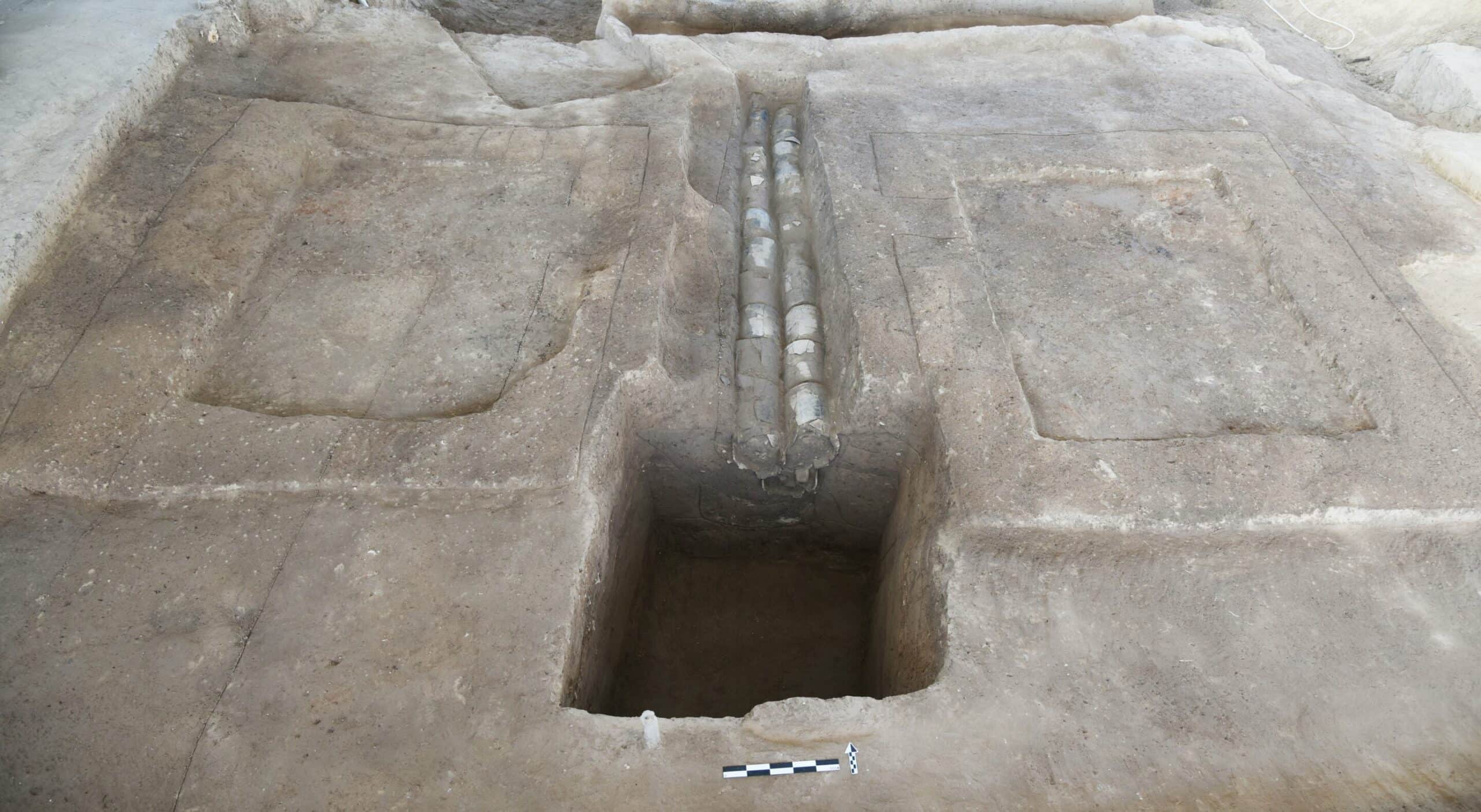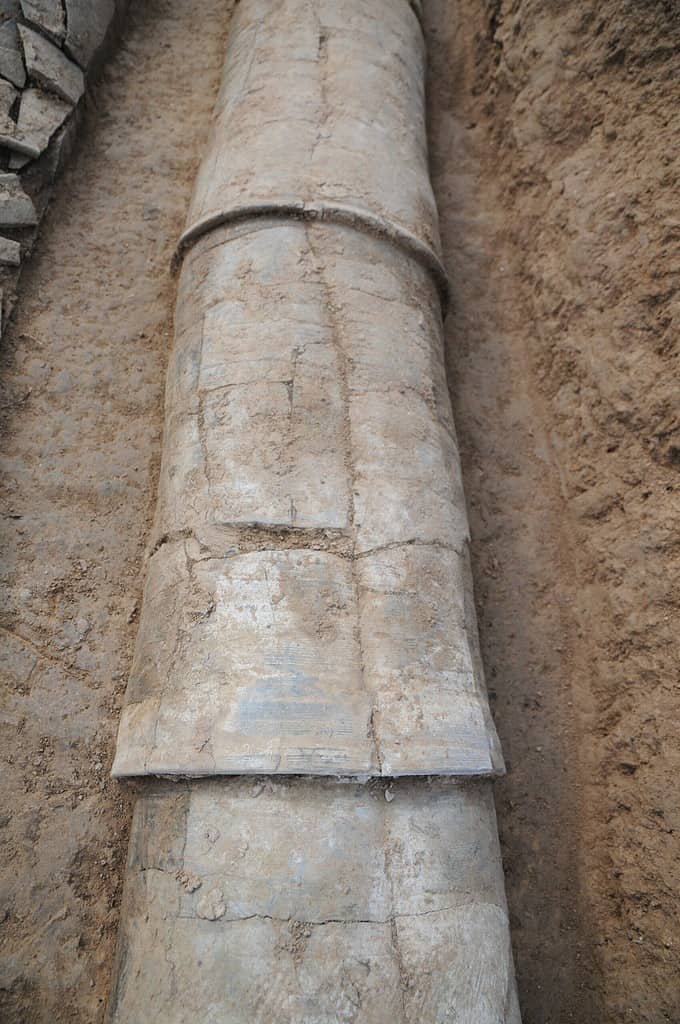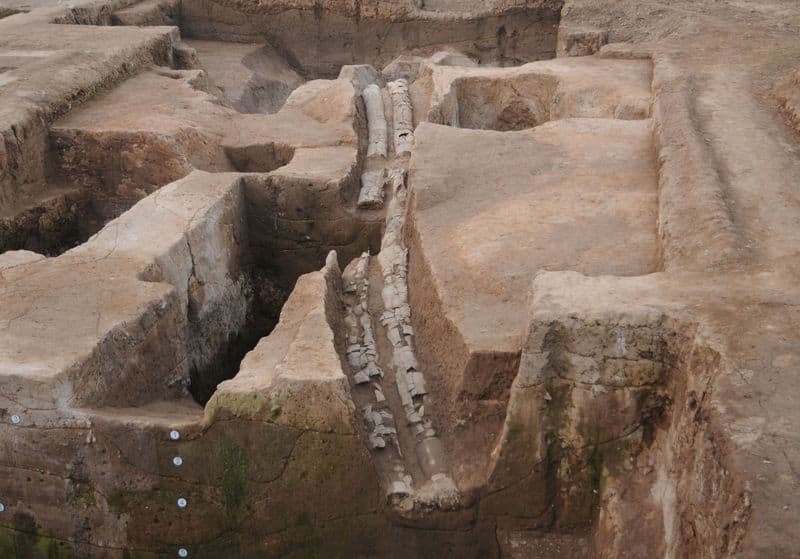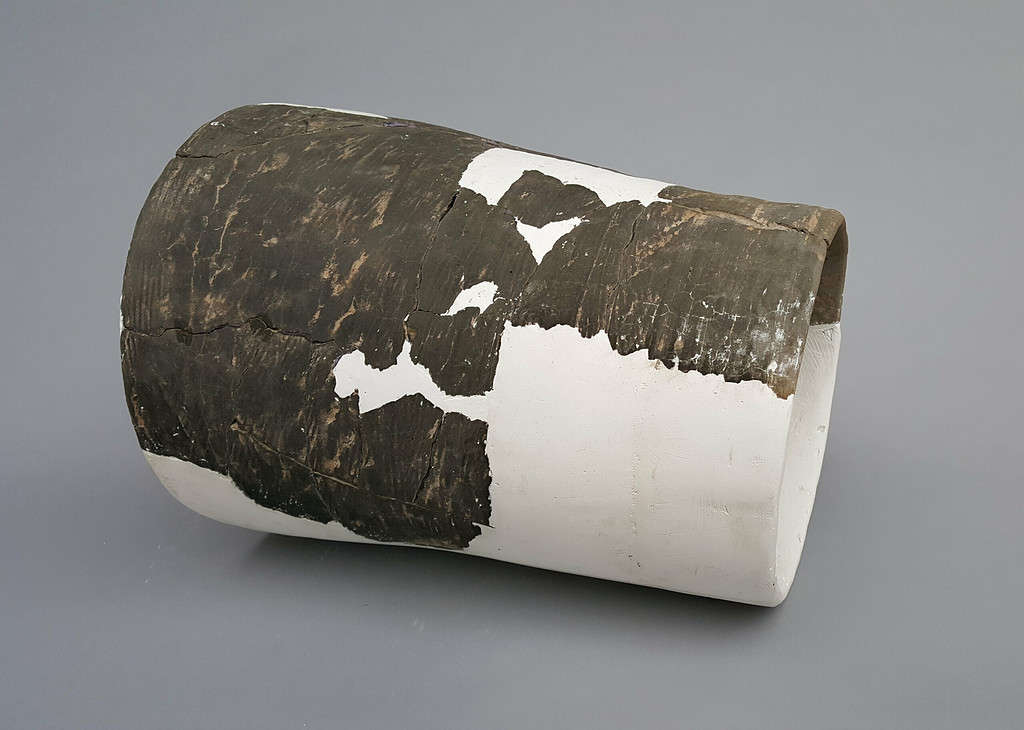
Archaeologists have made a stunning discovery at the Chinese walled site of Pingliangtai. They discovered a pipe that dates back 4,000 years, to a time when Pingliangtai didn’t have a centralized authority. So, it’s not only that this population built a long, complex water management system — but they did so without a centralized structure.
Pipes in an egalitarian society
When people think about inventions that revolutionized society, they usually bring up things like writing, or the wheel, or even pipes. But social structures brought about way more change than we give them credit for. Social structures, like centralized authority, help society function better — or at least, impose themselves over other alternative systems.
But as this culture brilliantly shows, alternative social systems can sometimes produce remarkable results.
It took years of research, but archaeologists finally have a decent understanding of the Pingliangtai community. It was a walled town, explains author Zhuang Yijie from the UCL Institute of Archaeology, senior and corresponding author on the paper.
“The square-shaped settlement has a clear layout, with a symmetrical structure of the gates, a north-south road on the central line and row houses on the two sides,” the author told ZME Science. “It might be an important origin of the central axis pattern, which was followed by many capital cities in later periods. And the town was equipped with a two-tiered drainage system consisting of ditches and ceramic drainpipes, which is the earliest ceramic drainage system in China. And some ruts were found on the road near the southern gate, which are also the earliest ruts in China.”
The ceramic pipes themselves are remarkable. They would have been a technological marvel of the time. The pipes consisted of segments some 30-40 cm (around 12-16 in) long and 20-30 cm in diameter. The segments were interconnected such that one could slot into the other. It is a unique water system, different from water systems elsewhere in the world at the time as it also managed excess monsoon water.

The pipes ran along roads and walls, apparently diverting rainwater and flood water from monsoons in particular. What’s striking is that this shows an advanced level of coordinated planning; yet this planning was achieved without centralized leadership, as far as researchers can tell.
All the houses discovered at Pingliangtai are uniformly small. There seems to be no apparent sign of inequality and social stratification of any sort. In other words, everyone seemed to be living pretty much the same way, in a communal fashion. This is different from neighboring cities, which do show clear signs of stratification. It’s not clear exactly how Pingliangtai was organized, but a project of this magnitude would have had to involve pretty much the entire community.
Not only is this remarkable, but it goes against a common archaeological dogma. Essentially, it refutes the idea that only a centralized state power with governing elites would be able to muster up the organization and resources to build something like this.
In particular, the authors referred to something called the Wittfogel hydraulic hypothesis.
Water despotism, water egalitarianism
Karl August Wittfogel’s hydraulic hypothesis, also known as the hydraulic civilization theory, is a social theory that attempts to explain the rise of centralized, autocratic states in ancient civilizations. Introduced in the mid-20th century, the hypothesis specifically focuses on how the management of water resources influenced political and social development.
According to Wittfogel, a civilization that deploys water management will have a ruling class that maintains control over its population by means of controlling the supply of water.
This is plausible because in many arid and semi-arid regions, large-scale irrigation systems were necessary for agriculture. These extensive irrigation works required significant management and control, leading to the creation of a centralized authority. This authority could control the allocation and distribution of water, and by extension, food production.
In turn, the centralized control of water allowed those in power to exert tremendous influence over the population. This could lead to a despotic state, where the ruling elite controlled not just the essential resources, but also the legal, economic, and social aspects of life.
Wittfogel pointed to several ancient civilizations, such as those in Mesopotamia, Egypt, and China, where control over irrigation systems coincided with the emergence of strong, centralized governments. In these civilizations, the bureaucracy required to manage the hydraulic infrastructure also allowed the rulers to consolidate political power.
But, as it turns out, egalitarian societies can also undertake large-scale projects.
Co-author Dr Hai Zhang of Peking University said: “Pingliangtai is an extraordinary site. The network of water pipes shows an advanced understanding of engineering and hydrology that was previously only thought possible in more hierarchical societies.”
Managing water

To reach this conclusion, Zhang and colleagues analyzed 147 sediment cores from the Huaiyang region in China. From this, they found evidence of strong variation in precipitation some 4,200 years ago. This included some extreme rainfall events. Such events, for a city basically established on a floodplain (like Pingliangtai), would have been very problematic. So, understandably, the 460-600 residents of the town adapted to flooding.
When the authors did some digging at the site, they uncovered a two-tiered drainage system that was constructed 4100 years ago and continuously upgraded and repaired for 200 years. The ditches and drains parallel to the houses could have been managed on a household level. However, there are also large drainage pipes in public areas — these would have required careful planning and coordination.
Sites that feature this type of flooding trouble are common throughout Asia, and various societies developed water management systems. However, researchers thought that water management evolved along with hierarchical power structures. But the sheer complexity and scale of the Pingliangtai piping contradict that idea.
Yijie Zhuang said:
“The discovery of this ceramic water pipe network is remarkable because the people of Pingliangtai were able to build and maintain this advanced water management system with stone age tools and without the organisation of a central power structure. This system would have required a significant level of community-wide planning and coordination, and it was all done communally.”
In an email to ZME Science, the researcher summed up the research:
“Besides these impressive new findings, the importance of Pingliangtai also lies in the alternative pathway to the development of social power that it indicates. The ceramic drainage system as well as the construction of a neatly-planned settlement required high-level coordination and organisation. But all houses and burials at Pingliangtai followed spatial uniformity and showed no clear difference in size and structure. It means that there were no powerful individuals at Pingliangtai and people cooperated within a heterarchical framework, which differs from Witffogel’s hydraulic despotism.”

But plenty of questions still remain about the piping system and the moated area associated with it.
“Was the moated feature designed for defence in light of limited evidence for a defensive function or might it have been a way to accommodate agricultural crops during seasonally drying periods? Could millet and/or subsequent wheat introduced about this time have been managed by a somewhat more predictable year-round water release source; that is, a rationale for efforts made to divert water into a moated reservoir?” asks Vernon Scarborough, an American academic anthropologist and archaeologist, in an accompanying article.
People tend to collaborate better against a common enemy, notes Scarborough. Was that enemy the monsoon or was it another nearby society? Or perhaps a mixture of the two? We don’t really know — the people of Pingliangtai still keep some of their secrets.
Undoubtedly, the site of Pingliangtai is fascinating — and most importantly, it forces us to reflect. Why is it that this site, and not others, opted against a despotic society? How did they collaborate to accomplish this, and what was their motivation exactly? An intriguing study like this one often poses more questions than it answers. Hopefully, future research can unearth the answers to these questions.






